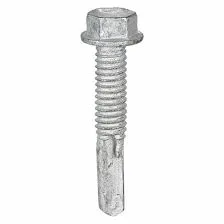Design and Installation of Anchor Bolts for Concrete Footings in Construction Projects
Understanding Concrete Footing Anchor Bolts Essential Components for Structural Integrity
When it comes to constructing sturdy and reliable buildings or structures, several critical components come into play, with concrete footing anchor bolts standing out as one of the most significant. These anchor bolts offer crucial support, helping to secure various elements of a structure to its foundation. This article provides an overview of what anchor bolts are, their types, installation methods, and their importance in construction.
What are Concrete Footing Anchor Bolts?
Anchor bolts are long steel rods or bars embedded in concrete that serve to attach various structural components, such as columns, walls, or machinery, to the concrete foundation itself. They essentially act as a bridge between the structural elements and the footing, ensuring stability, resisting lifting forces, and preventing movement due to wind or seismic activity.
Concrete footing anchor bolts are specifically designed to anchor into the concrete footings of a structure. They are typically installed before the concrete is poured and are available in various shapes and sizes, depending on the design requirements and load specifications of the structure.
Types of Anchor Bolts
There are several types of anchor bolts, and the choice of which to use often depends on the specific requirements of the project
1. L-Bolts Shaped like the letter L, these bolts are typically used to anchor structures that require vertical stability. The horizontal part of the L is embedded in the concrete, while the vertical part extends upward to attach to other structural elements.
2. J-Bolts Similar to L-bolts, J-bolts are shaped like the letter J. They are often used in applications where a hook at the end is needed to allow for additional support, making them ideal for securing structures that experience fluctuating loads.
3. Straight Bolts These are straight rods that pass directly through the concrete and are used with nuts and washers to secure structural elements above. They offer versatility and are commonly used in a variety of applications.
4. Sleeve Anchors These anchors are installed in holes drilled into the concrete and use a sleeve that expands against the concrete when the bolt is tightened. They are often used for lighter loads and are easy to install.
Each of these bolt types offers unique advantages, and the choice of anchor bolt must be carefully aligned with the load requirements and construction standards of the project.
concrete footing anchor bolts

Installation of Anchor Bolts
The installation process of concrete footing anchor bolts is crucial to ensuring structural integrity
. Here are the general steps involved1. Planning and Design Before the installation, a detailed engineering plan is created, specifying the location, type, and number of anchor bolts required. Load calculations are also performed to ensure safety and performance.
2. Setting the Forms Forms for the concrete footing are set in place, and the anchor bolts are positioned based on the specifications outlined in the engineering plan.
3. Concrete Pouring Once the bolts are correctly positioned, concrete is poured into the forms. Care must be taken to ensure that the bolts remain in place and are adequately covered by the concrete.
4. Curing After pouring, the concrete must be allowed to cure properly to reach its full strength, ensuring that the anchor bolts are securely bonded with the footing.
5. Final Inspection After curing, an inspection is performed to check the alignment and integrity of the anchor bolts, ensuring they meet all project specifications.
Importance of Anchor Bolts in Construction
The importance of concrete footing anchor bolts cannot be overstated. They play a vital role in maintaining the overall stability and security of a structure. Without properly installed anchor bolts, buildings and structures would be at risk of movement or failure due to environmental stresses such as wind, earthquakes, or soil settlement.
Moreover, building codes typically require specific standards for anchor bolts, emphasizing their critical role in construction safety. Engineers and builders must adhere to these codes to ensure that the structures they create are not only functional but also safe for occupancy.
Conclusion
In conclusion, concrete footing anchor bolts are essential components in construction that contribute to the durability and safety of structures. Understanding their types, installation processes, and significance can greatly enhance the quality of building projects. As construction technologies and methodologies continue to evolve, anchor bolts will remain a fundamental element, ensuring that our buildings withstand the test of time and environmental challenges.
-
Weatherproof Plastic Expansion Anchors for OutdoorАхборJun.06,2025
-
Sustainability in the Supply Chain: Eco-Friendly TEK Screws ProductionАхборJun.06,2025
-
Load-Bearing Capacity of External Insulation FixingsАхборJun.06,2025
-
Double Head Bolts: Enhancing Efficiency in Industrial MachineryАхборJun.06,2025
-
Corrosion Resistance in Chipboard Screws: Coatings for Wholesale DurabilityАхборJun.06,2025
-
Butterfly Toggle Bolts : Enhancing Structural ResilienceАхборJun.06,2025
